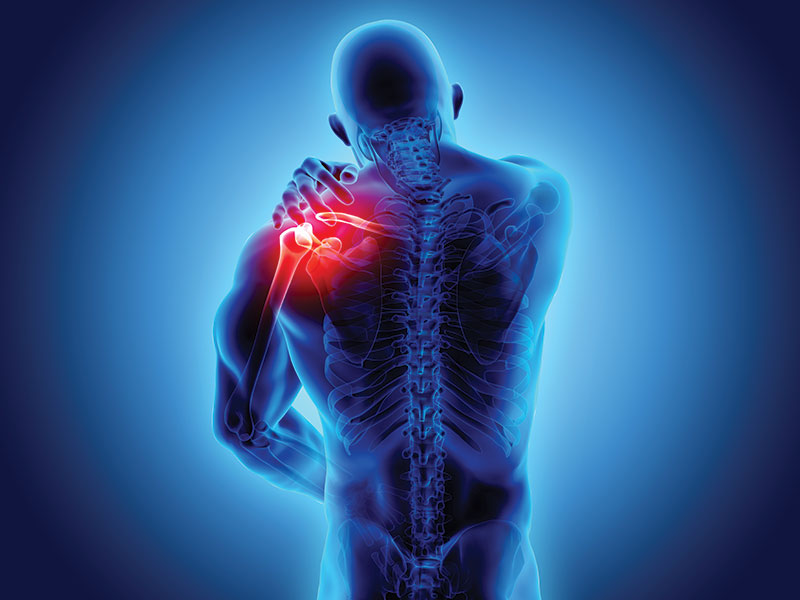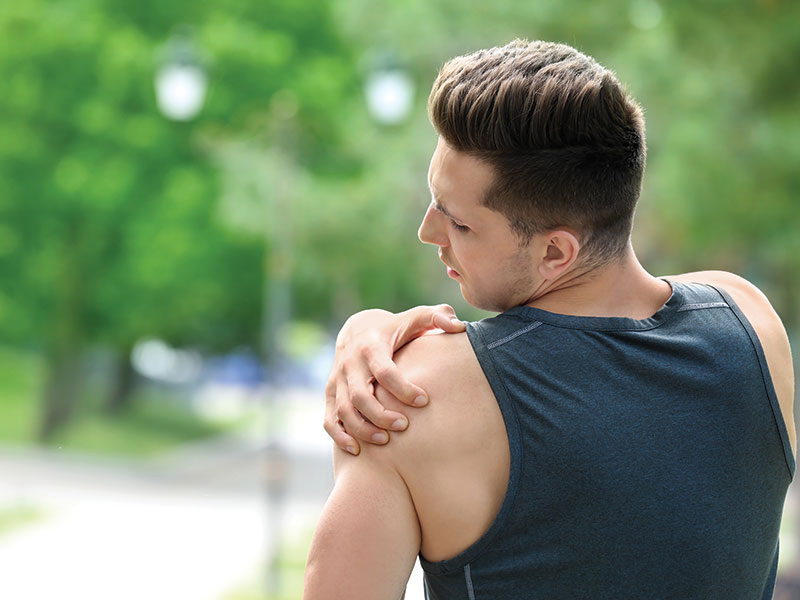Shoulder Pain
All of our Physiotherapists are specialists in assessing the shoulder and are experienced in special testing to diagnose conditions and are also able to advise whether a shoulder scan is necessary.

The shoulders five key structures
Bones The humerus the long upper arm bone. The scapular commonly known as the shoulder blade is an irregular bone providing the socket for the shoulder joint. The clavicle (collar bone) is an accessory joint of the shoulder, it connects to the scapular forming the acromioclavicular joint and also connect to sternum forming the sternoclavicular joint joining the shoulder to the body.
Ligaments are fibrous thick bands of fibre that reinforce and support the shoulder joints. There are numerous ligaments with various support function.
The rotator cuff is a collection of four stabiliser muscles 1) Teres minor 2) infraspinatus 3) Supraspinatus 4) Subscapularis. The rotator cuff supports and holds the humerus head into the scapular socket while allowing a wide range of motion.
Bursa is a small sac of fluid that cushions and protects the tendons of the rotator cuff from friction. This structure may become inflamed with impact or compression from tight shoulder musculature resulting in shoulder pain.
The Labrum is a cuff of flexible cartilage that deepens the socket of the shoulder joint allowing for extra support for the ball-like head of the arm bone to fit into.
The shoulders most common injuries
Shoulder dislocation occurs when the humerus (arm bone) is forced from the socket of the shoulder. Ligament, tendon, bone and labrum injury may also occur at this time and it is advised to have a shoulder MRI following dislocation to examine the extent of the injury.
Shoulder subluxation is when the humerus (arm bone) is forced partially from the socket of the shoulder, the shoulder can also become subluxed from poor prolonged posture and muscular imbalances.
Rotator cuff disease is due to trauma from falling, lifting awkwardly and friction from adjacent boney structures causing wear and tear. Other causes can be from overuse in sports particularly activities that involve repetitive overhead motions.
Frozen shoulder (adhesive capsulitis) is acute shoulder pain and increasing stiffness that can last beyond 18-months. It is caused by inflammation and thickening of the shoulder ligaments and capsule.
Shoulder subacromial impingement is present when the rotator cuff muscle tendons are in contact with the under surface of the acromion which is an extension of the shoulder blade bone causing pressure, irritation and inflammation.
There is a multitude of various other shoulder conditions associated with the same above mentioned structures, some of these conditions have similar symptom patterns so it is important to have your shoulder assessed thoroughly to specify correct line of treatment.

Exercise Physiology, Clinical Pilates & Sports Physiotherapy in Sydney
ES Physiotherapy has holistic physiotherapy practices in Waterloo, Kingsford, Randwick & Bondi Junction with a focus on outstanding care, individualised treatment and injury prevention, so you recover quicker.

